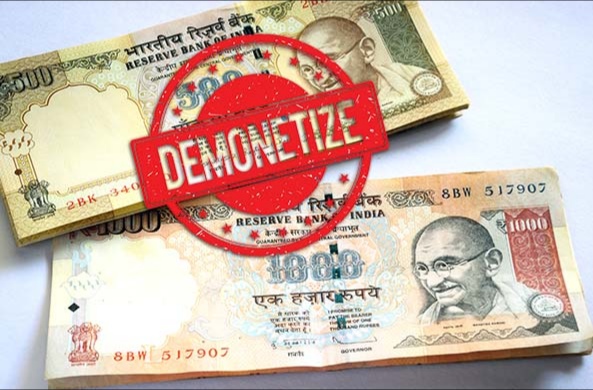On the eve of 8th November 2016, the people of India had their biggest blow when the Nation’s prime minister, Narendra Modi, announced that ₹500 and ₹1000 denomination notes are being withdrawn out of circulation from midnight and will no longer be a legal tender. The Government’s objective behind Demonetization was to curtail the shadow economy, to reduce illicit cash and to eliminate terror funding by use of counterfeit currency. The move created immediate disruption in the economy, there was extreme shortage of cash in nation which harmed employment and demand creation in Economy. Moreover, common people died due to the rush of exchanging currency. Demonetization was heavily criticised for its unplanned and hasty execution. “It was poorly designed, with scant attention paid to the laws of the market, and it is likely to fail. So far its effects have been disastrous for the middle- and lower-middle classes, as well as the poor. And the worst may be, yet to come,” wrote Economist Kaushik Basu in The New York Times. The policy wasn’t discussed with the experts and analyzed according to Indian Economy. And it was implemented only for the sake of implementation without considering its effectiveness. Even after three years of Demonetization, its demon still prevails and continues to haunt the economy. Intellects like Raghuram Rajan, Gita Gopinath, Manmohan Singh etc have held it responsible for current economic slowdown, Former Prime Minister Manmohan Singh slammed demonetization, calling it a “monumental mismanagement” that might bring GDP down by 2 percent.” In my opinion that the way the scheme has been implemented will hurt agricultural growth in our country, will hurt small industry, will hurt all those people who are in the informal sector of the economy. And my own feeling is that the national income that is the GDP, can decline by about 2 percent as a result of what has been done. This is an underestimate,” said Dr. Manmohan Singh. He also highlighted how this move was affecting the people from marginalized sector. He said: “Prime Minister has said that we should wait for 50 days. Well, 50 days are a short period. But for those who are poor and from the deprived sections of the society even 50 days torture can bring about disastrous effects. And that’s why about 60 to 65 people have lost their lives, maybe more. And what has been done can weaken and erode our people’s confidence in the currency system and in the banking system.”
The Indian economy has suffered a lot due to the move, it has witnessed excessive loss of employment in unorganized sector where around 85% of the whole population is engaged. This has lead to income shock in informal sector which has in turn harmed the formal sector as the demand in this sector declined by large. It has also leaded to the reduction in Gross Domestic Product (GDP) in the nation due to the decline in overall spending. The twin effect of demonetization was supposed to promote digitalization in India, again the result of which was not very impressive Talking in a numbers, According to the RBI, data UPI- based transactions replaced cash by around 1% only and wallet has witnessed a growth of just 1% of total retail payments. The impact was not as expected, but it did promote cash less transactions by way of a electronic and card payment in retail sector.
Demonetization has been one of the biggest failure of present government as it failed in realizing its objective. According to the RBI Report, 99.3% of demonetized currency were back in circulation implying that the government failed to remove black money out of the economy. Also, this sudden choking of cash in economy resulted in extreme channelization of cash in economy leading to creation of artificial demand thereafter. The reports have further claimed considerable decline in the manufacturing sector as the sales of FMCG and automobiles have suffered. There has been contraction Manufacturing purchasing manager’s index and index of industrial production. It has also harmed the construction and real state sector.
Economists consider lack of resources as the biggest reason for corruption in an economy. Nevertheless, currency is considered as the biggest resource of any economy. After demonetization, the scarcity of cash has felicitated departmental corruption. Subsequently, government handed over the bulky responsibility of inspecting 140 crore bank accounts on the shoulders of 15000 Income tax officials putting them into astonishing numbers. In a nutshell, Narendra Modi will be remembered as a Prime Minister who has wholeheartedly invited an economic crisis in the name of economic reforms and will be credited for turning worlds the fastest growing economy into a shivering economy. The moving economy has also been shrinked in terms of jobs. However, the failure of demonetization is still leaving a question that what will be the best way to remove corruption from the country?
Writer – Garima Singh
Student of Faculty of Commerce, BHU
